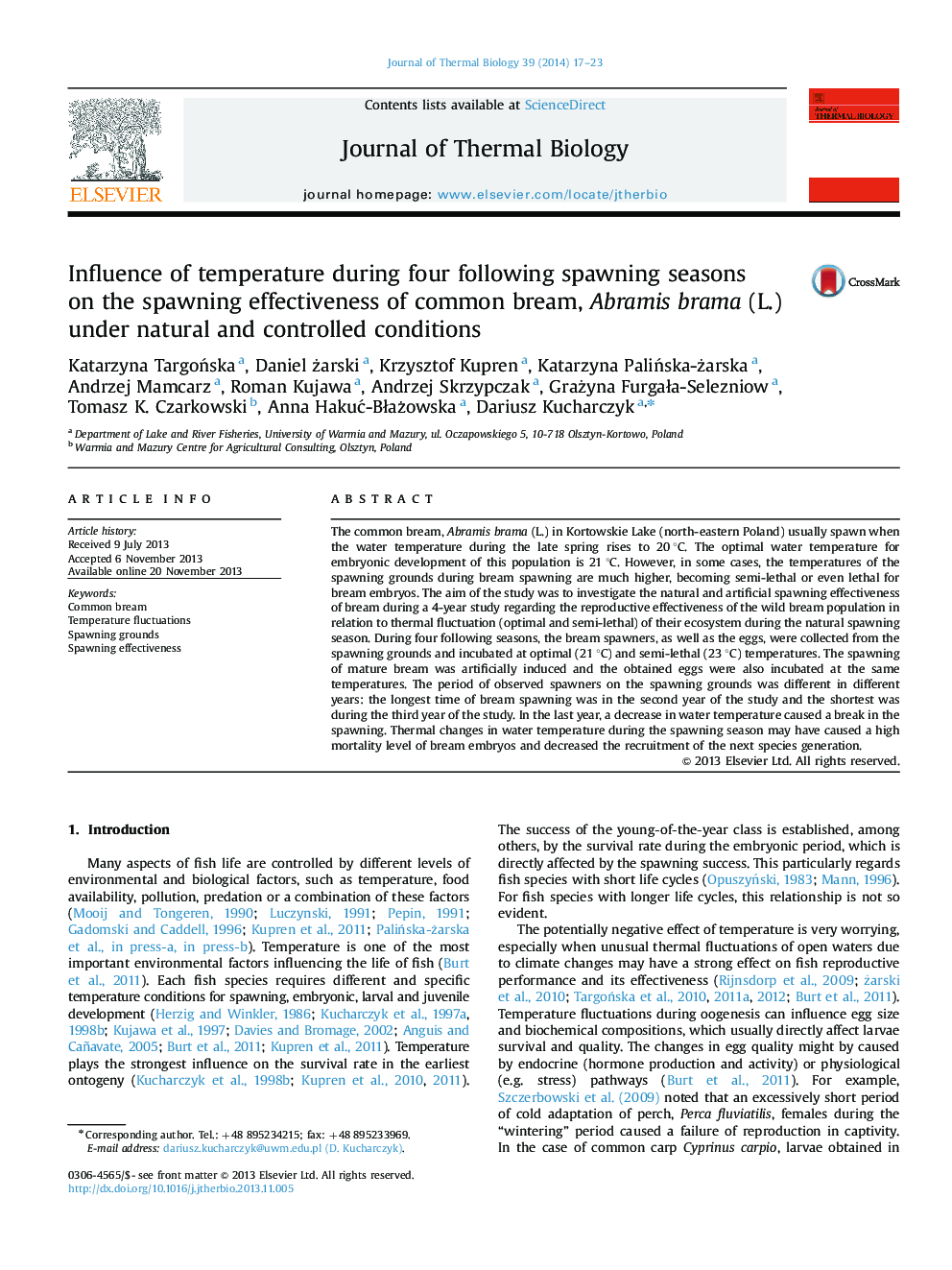| کد مقاله | کد نشریه | سال انتشار | مقاله انگلیسی | نسخه تمام متن |
|---|---|---|---|---|
| 2842996 | 1571106 | 2014 | 7 صفحه PDF | دانلود رایگان |

• Water temperature fluctuations during the spawning season of common bream in the lake might strongly influence bream embryo survival.
• Bream spawners collected when the water temperature was about 20.5 °C or below spawned successfully under controlled conditions.
• The thermal experience of bream spawners during final gamete maturation influences strongly the fitness of the next generation.
The common bream, Abramis brama (L.) in Kortowskie Lake (north-eastern Poland) usually spawn when the water temperature during the late spring rises to 20 °C. The optimal water temperature for embryonic development of this population is 21 °C. However, in some cases, the temperatures of the spawning grounds during bream spawning are much higher, becoming semi-lethal or even lethal for bream embryos. The aim of the study was to investigate the natural and artificial spawning effectiveness of bream during a 4-year study regarding the reproductive effectiveness of the wild bream population in relation to thermal fluctuation (optimal and semi-lethal) of their ecosystem during the natural spawning season. During four following seasons, the bream spawners, as well as the eggs, were collected from the spawning grounds and incubated at optimal (21 °C) and semi-lethal (23 °C) temperatures. The spawning of mature bream was artificially induced and the obtained eggs were also incubated at the same temperatures. The period of observed spawners on the spawning grounds was different in different years: the longest time of bream spawning was in the second year of the study and the shortest was during the third year of the study. In the last year, a decrease in water temperature caused a break in the spawning. Thermal changes in water temperature during the spawning season may have caused a high mortality level of bream embryos and decreased the recruitment of the next species generation.
Journal: Journal of Thermal Biology - Volume 39, January 2014, Pages 17–23